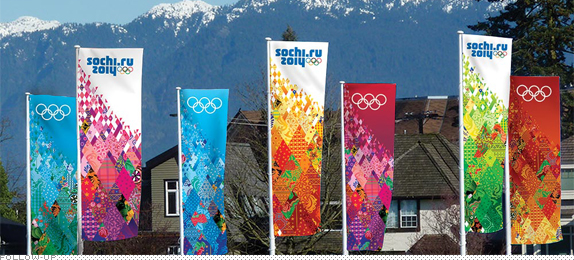Laura Wasilowski, the Dean of Corrections of the Chicago School of Fusing, brought her particular brand of quilting humor to our guild this weekend and some members at the meeting Friday night laughed so hard they were wiping their eyes . She used her quilts, like "Gus Cleans His Room" and "Nude Blue Chair Reclining" to tell her "life" story, punctuated with parodies of popular songs.
I, of course, forgot to take pictures on Friday night, but I had another opportunity on Saturday at her workshop, and here she is urging us on in our creative endeavors:
We were all quite involved with our tasks:
and ended up creating an amazing variety of little quilts. The title of the workshop was "Four Little Landscapes,"
and this was the main example of what we would be doing. But Laura, excellent teacher that she is, made up several examples as other options and encouraged us to follow our own creative urges and so we weren't producing carbon copies of her work and were getting the hang of successfully working with a fusible. Most of them did resemble landscapes in some form--flower gardens, mountains, vacation destinations, cityscapes, peace-scapes, tropical isles, Pine Creek, lakes with sail boats-- but then there was mine. Her final option was to go totally abstract, and that was the one I chose:

Actually, there is a triangle missing from that bottom left corner that I discovered on the floor after I photographed these, but these are far from done. They are made from the 1 1/2 yards of Laura's intensely colored hand-dyes that came with the class fees.
At the end, as part of the graduation ceremonies, we all sang the Chicago School of Fusing Fight Song
and Laura declared us all Iron Maidens.
Since I was facilitator for Laura's visit, my mind was half in the class and half watching out for details like lunch orders and extension cords. I didn't get to spend as much time as I would have liked looking at the examples of her
work--beautiful, colorful, whimsical pieces with lots of tiny details and wonderful texture created by all her hand stitching that just doesn't show up sufficiently in photographs. I did, however, get to buy some of her beautiful hand-dyed threads that I have become addicted to:

But one of the perks of being facilitator is that I got to spend some extra time with Laura, getting her from her B&B to the lecture and workshop and taking her out to dinner. I have met several big name quilters over the years I have had this guild position, and I think Laura wins the award as the friendliest. She is genuinely a nice person, and it was a pleasure to spend time with her--and with her husband, who had made the trip with her, a little extra benefit. (Sounds a bit cliched here but the image in my head is not.) Making art is a solipsistic kind of endeavor--as Laura jokingly says, in both her lecture and her teaching, "Remember. It's all about me. Just about me!"--and it is reassuring to meet someone who has made art for so long and has maintained a sense of humor and enjoys connecting with other people.
I also envy the amount of energy these national teachers have. Laura had a several hour drive to get here but carried on a lively conversation at dinner and then sang and spoke for an hour at the meeting and talked with members of the guild for another half an hour afterward--and was still awake on the drive to the B&B.
Now back to the rest of my life. And if you're still with me, thanks for the company.
























